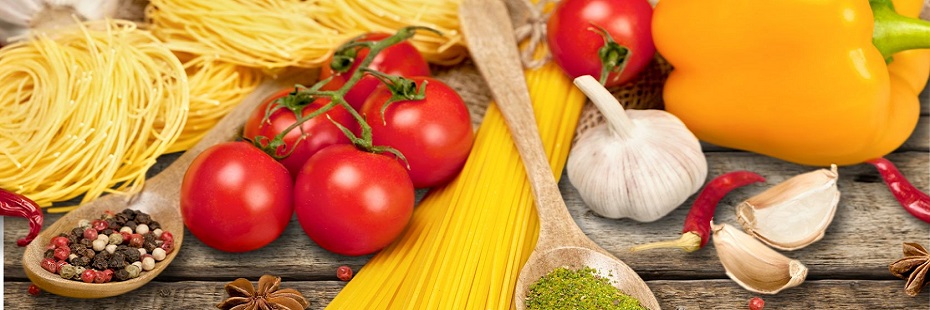| La prima volta che ho ordinato un espresso in un elegante ristorante newyorchese, mi hanno portato la tazzina con una piccola scorza di limone graziosamente e decorativamente appoggiata al cucchiaino. Non ho veramente fatto caso a questo "incidente" fino a che non si è ripetuto la seconda, terza e quarta volta, in altri ristoranti o bar. | The first time I ordered an "espresso" in an elegant restaurant in New York City, they brought me the espresso in a cup with a tiny lemon skin, nice and decorative, placed on the coffee spoon. I didn't really pay attention to this curious "accident" until it happend a second, third, fourth time, in other restaurants and bars. |
| A New York, l'espresso viene evidentemente associato alla scorza di limone, mentre in Italia nessuno si sognerebbe mai di fare una cosa del genere. | In New York, "espresso" seems to be associated with lemon skin, while in Italy nobody would do something like that. |
| Ho chiesto in giro quale fosse l'origine di una simile "tradizione" e la risposta più plausibile che ho ottenuto è la seguente: quando gli emigranti italiani arrivavano a New York, dopo una lunga navigazione di venti giorni su navi affollatissime, chiedevano sempre un caffè e un limone. Il caffè serviva, emozionalmente, per ricordare un'abitudine italiana, il limone era usato, fisicamente, per curare i sintomi della pellagra e per reintegrare i loro corpi con vitamina C di cui, dopo un faticoso e malnutrito viaggio in mare, erano carenti. | To find out more about this "tradition", I interviewed some people; the most plausible answer I got was the following: when Italian emigrants arrived in New York, after 20 long days of navigation on overcrowded ships, they would always ask for a coffee and a lemon. The coffee was to emotionally recall an Italian habit, the lemon was to physically cure "symptoms of pellagra" and to reintegrate the vitamin C their body was missing after a wearing and undernourished voyage at sea. |
| Un'altra cosa che ho scoperto non essere veramente italiana, è il cosiddetto "condimento italiano", una specie di salsa francese offerta e venduta dappertutto negli Stati Uniti, dai supermercati ad alcuni ristoranti, che in Italia non esiste. | Something else that I discovered not to be truly Italian is the so called "Italian dressing", a french-like sauce offered and sold everywhere in the US, from supermarkets to certain restaurants, that in Italy does not exist. |
| Il condimento tradizionale italiano è molto semplice: olio d'oliva, sale e, se piace, aceto. | The traditional Italian dressing is very simple: olive oil and salt and, if you like it, vinegar. |
Un fresco piatto estivo chiamato "pinzimonio" si prepara così: tagliate a pezzi delle verdure crude (sedano, carote, pomodori, finocchio, insalata, carciofi...) e disponetele decorativamente in un piatto da portata. In una ciottola separata, mischiate olio d'oliva, sale e pepe nero macinato. Ogni ospite potrà intingere e gustare, in questo condimento classico, le sue verdure preferite. |
A fresh, summer-dish called "pinzimonio", is thus prepared: cut into pieces different raw vegetables (celery, carrots, tomatoes, fennel, lettuce, artichokes...) and arrange them nicely in a serving dish. In a separate cup mix olive oil, salt and grounded black pepper. Each guest will dip and taste, in this simple and classic dressing, his/her favourite vegetables. |
| La nostra ultima "leggenda" riguarda il pomodoro. I pomodori sono considerati un ingrediente molto italiano e, questa volta, è vero! Ma non molti sanno che i pomodori furono importati dal sudamerica (dove erano chiamati "tomatl") e che, come arrivarono in Italia, verso la fine del XVI secolo, erano coltivati al nord come piante ornamentali e venivano totalmente ignorati per cucinare. Il nome "pomo d'oro" significa "mela dorata" e si riferisce ad uno dei colori che il pomodoro assume quando matura. | Our last "legend" is about "il pomodoro" (the tomato). Tomatoes are regarded now as a very Italian ingredient and this is indeed true! But not many people know that tomatoes were imported from South America (where they were called "tomatl") around the end of the 16th century, and in Italy they were cultivated in the North as ornamental plants, beeing totally disregarded for cooking. The name "pomo d'oro" means "golden apple" and it refers to one of the colors that the tomato assumes when it is ripening. |
| Ci volle la creatività e la povertà della gente del sud per associare i pomodori alla pasta e creare così i famosi "spaghetti al pomodoro". | It took the southerners creativity and poverty to associate tomatoes with pasta and create thus the famous "spaghetti al pomodoro". |
| La prima storica ricetta degli "spaghetti al pomodoro" ci viene dal duca Ippolito Cavalcanti, nel libro "Cucina Casereccia in Dialetto Napoletano", del 1839. Qui segue un adattamento di questa ricetta: | The first historical recipe of "spaghetti al pomodoro" was described by duke Ippolito Cavalcanti, in 1839, in the book "Cucina Casereccia in Dialetto Napoletano" (Homecooking in Neapolitan Dialect). Here is an "adaptation" from Cavalcanti's recipe: |
| (per quattro persone). Prendete un chilo di pomodori freschi e maturi (i pomodori da sugo sono quelli piatti e oblunghi). Scartate le parti brutte, i semi e l'acqua e cuocete i pomodori finché morbidi. Passate tutto attraverso un colino e continuate la cottura finché il resto dell'acqua evapora. Rimuovete la salsa dal fuoco, lasciate raffreddare e aggiungete olio d'oliva (tre o quattro cucchiai da tavola), sale, basilico fresco e pepe nero. In una pentola a parte fate bollire dell'acqua e aggiungete mezzo chilo di spaghetti e mezzo chucchiaio di sale. Girate spesso gli spaghetti affinché non si attacchino. Cucinate per cinque minuti (o più o meno, a seconda del tipo di pasta, ma non cuocete troppo. Si può assaggiare la pasta per assicurarsi che sia al dente: la consistenza deve essere "buona", non troppo dura e sicuramente non molle). Scolate la pasta e aggiungetela alla salsa. Mescolate e rimettete a cuocere per altri tre minuti, aggiungendo, se piace, parmigiano e servite. | (for four people). Take two pounds of fresh and very ripe plum tomatoes. Discard blemishes, seeds and water and cook tomatoes until they are soft. Pass them through a sieve and continue cooking until they loose the rest of the water. Remove sauce from fire, let it cool and add olive oil (three or four tablespoons), salt, fresh basil and pepper. In a separate casserole bring water to boil and add one pound of spaghetti and a half tablespoon of salt. Stir often so that the spaghetti don't stick together. Cook them for five minutes (more or less, depending on the kind of pasta, but DON'T overcook). You can taste the pasta to make sure it is "al dente": it should have a good consistency, not too hard and definitely not soft. Drain the pasta and add it to the sauce. Stir, cook the mixture for three more minutes, add parmesan cheese, if you like it, and serve. |
Buon appetito! |
Buon appetito! |
TESTIMONIAL (more...):







